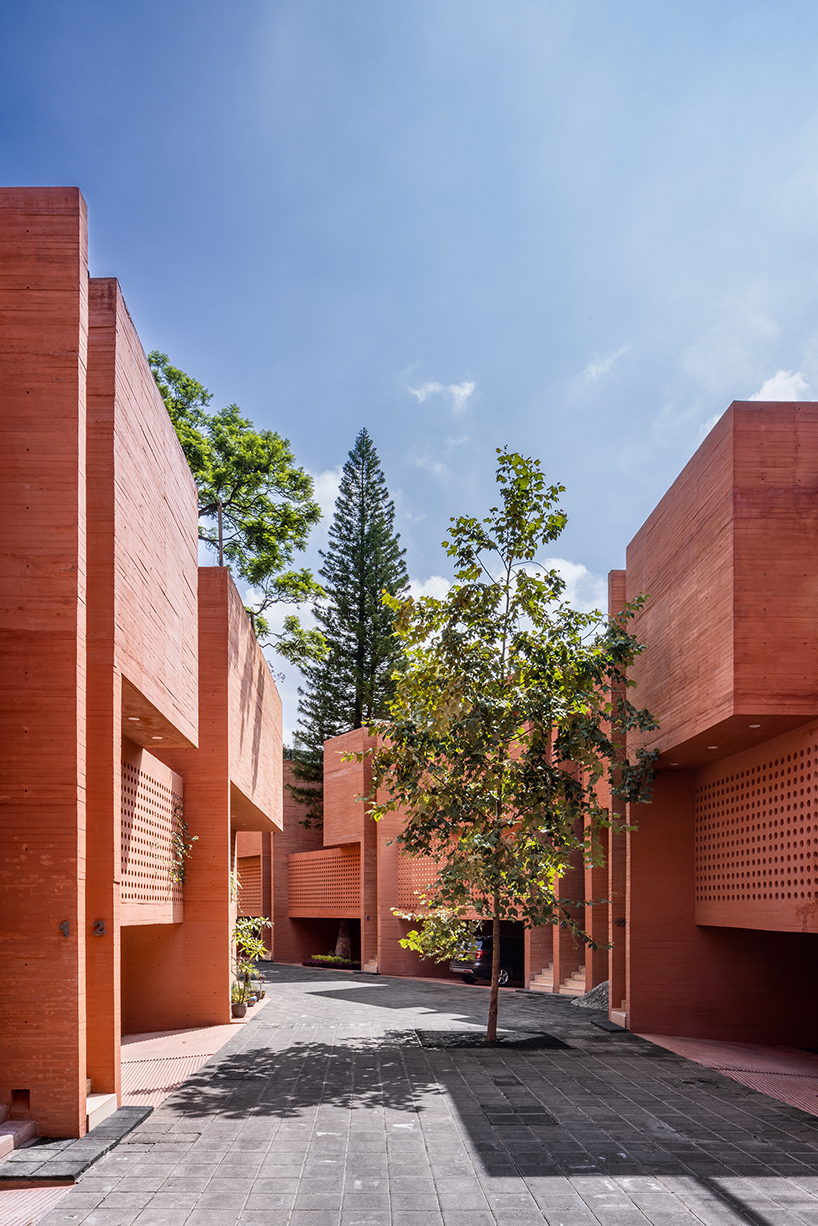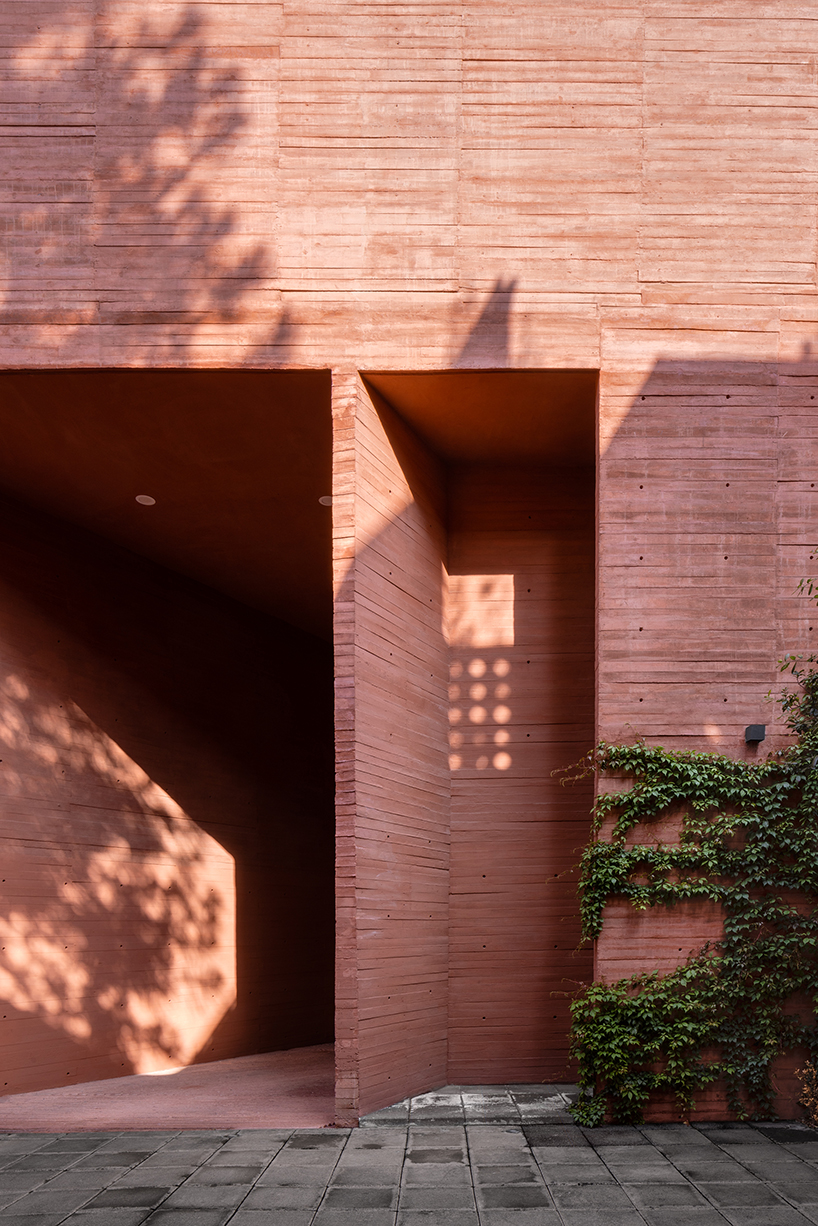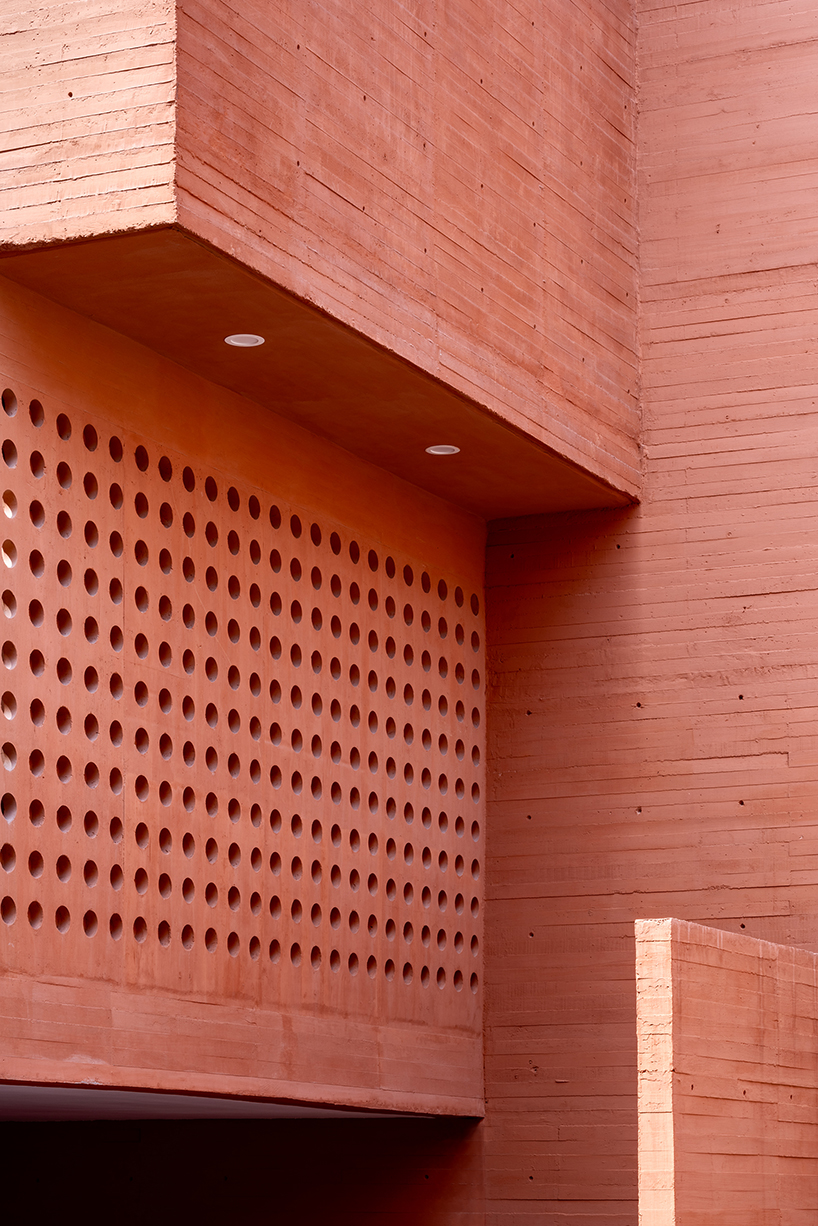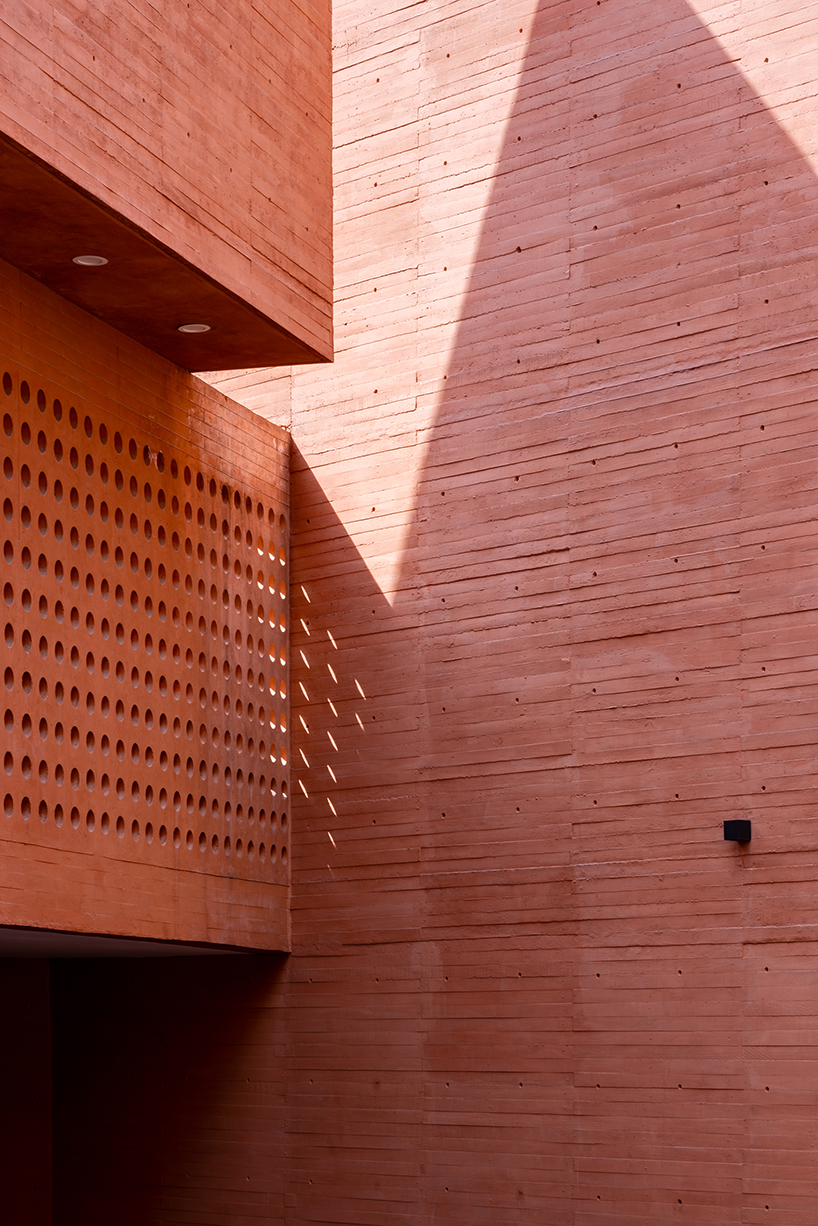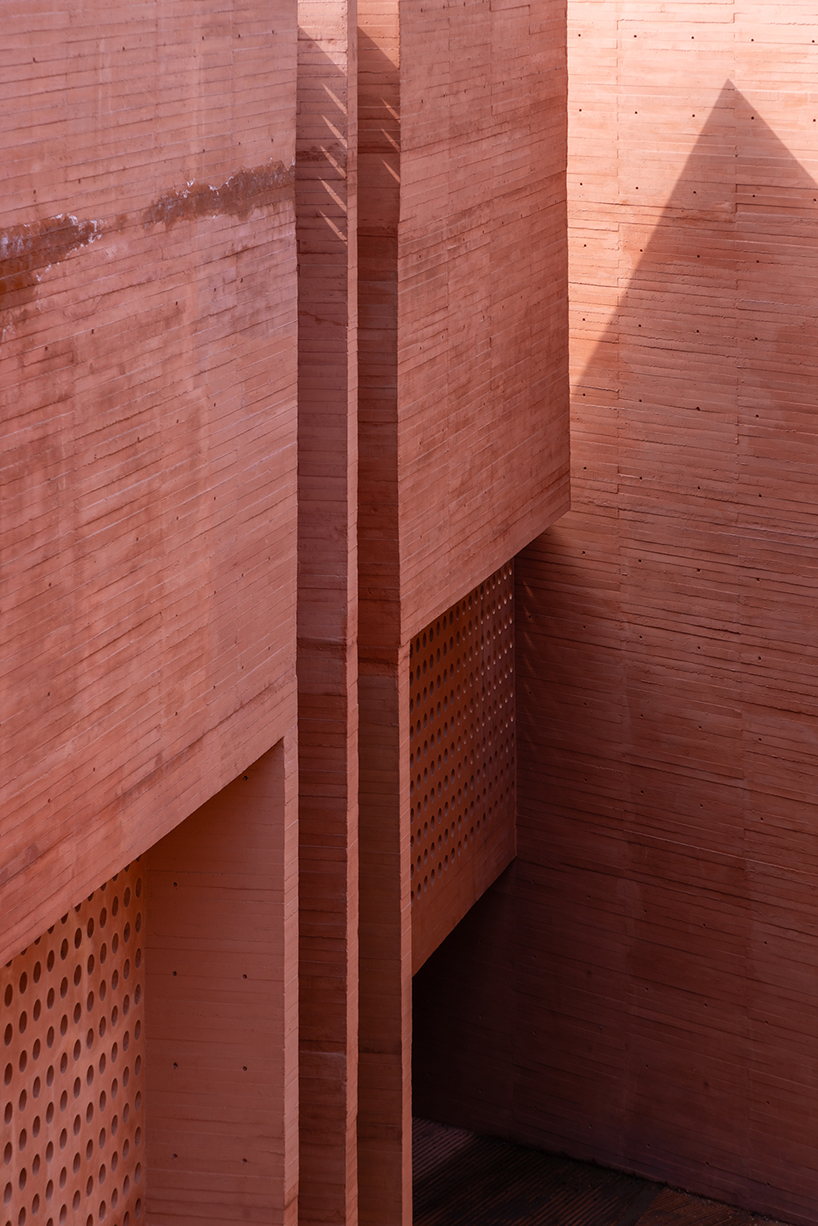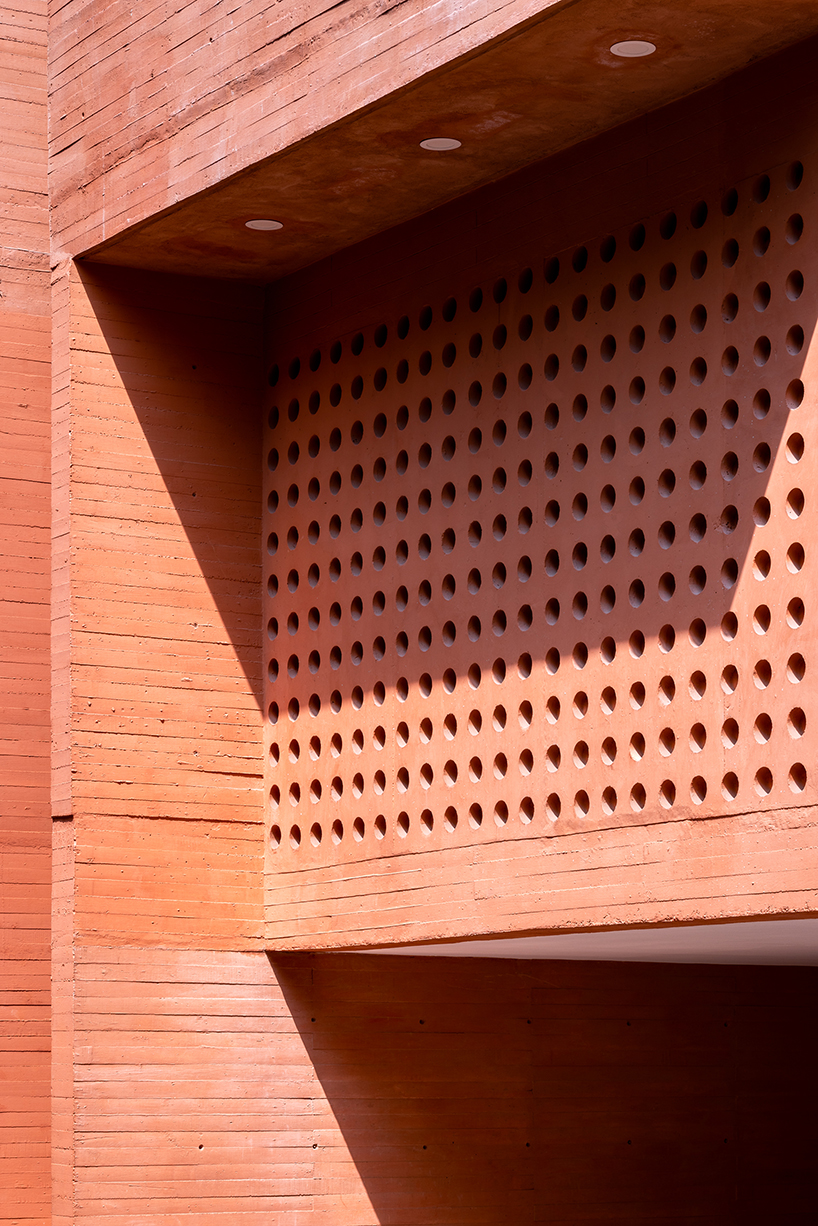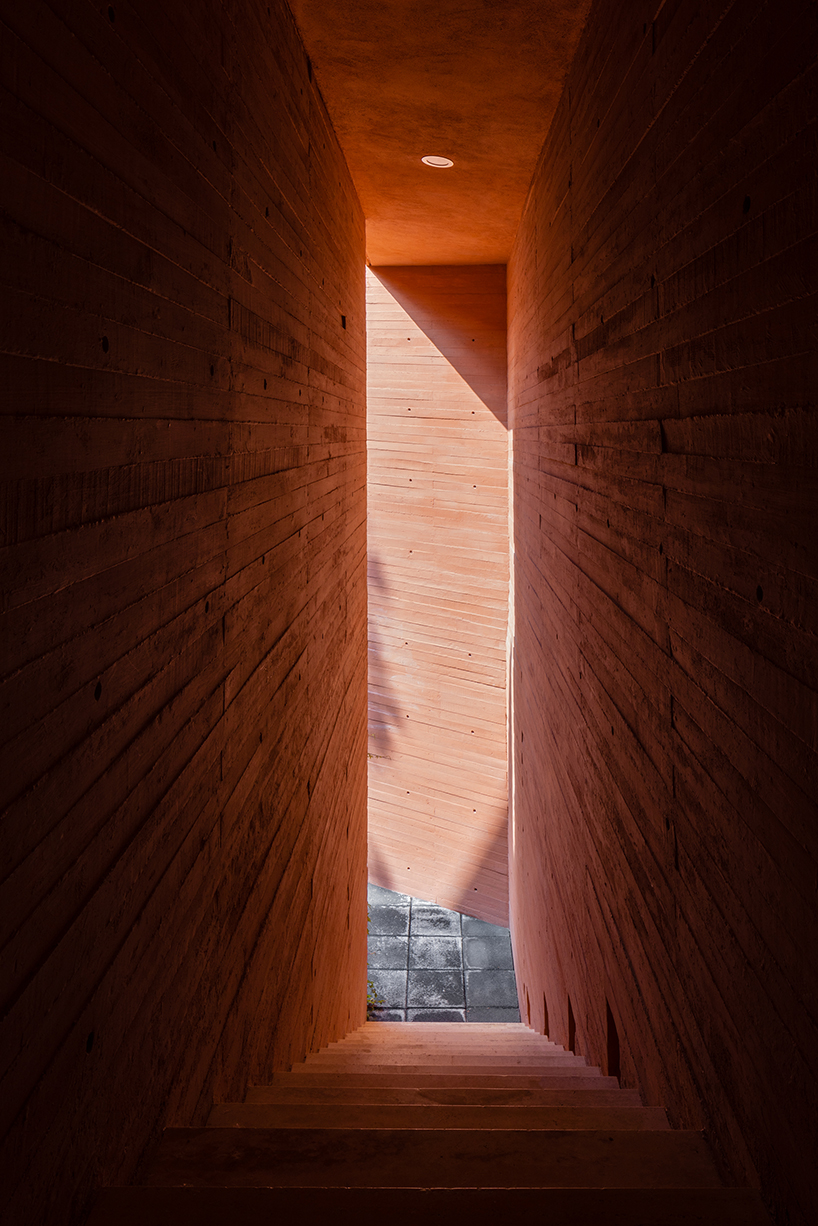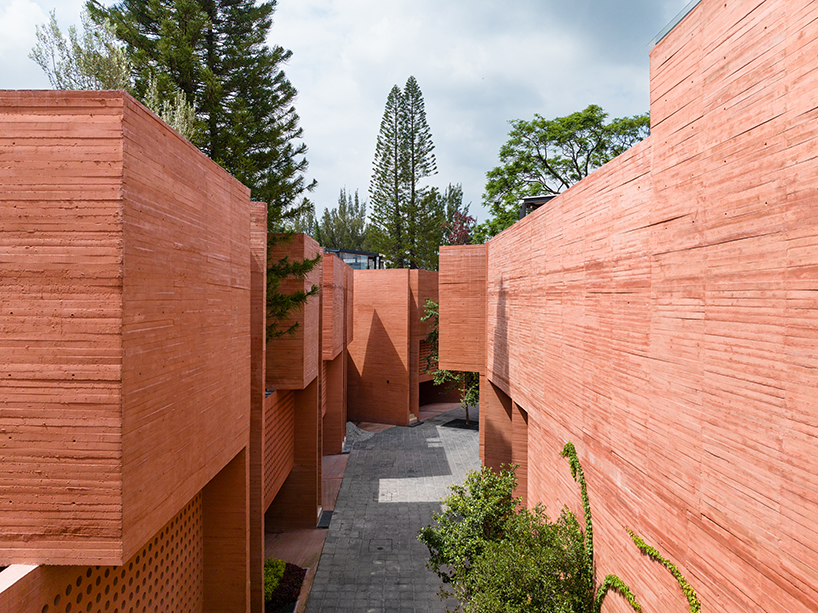a housing complex that pops up in bright orange colors
Designer Miguel de la Torre of mta+v architectural group constructs an orange concrete residential complex in the Coyoacan neighborhood, in Mexico City. The contemporary housing structure ‘Real de los Reyes’ accommodates 13 units, versatile to adapt to the users’ different lifestyles, and distributes them in a network of large geometric interconnected volumes covering an area of 4.540 sqm. The project proposes a functional and aesthetically well-defined building, in which mass and materiality are exposed in a solution that personalizes the home.
The architectural program is based at its core around the daily activities in the home, given the change in post-pandemic routines, and integrates comfortable, contemplative, and functional spaces providing suitable ambiance, lighting, and privacy. The design achieves the imparting of various living typologies with the evidence of architectural elements and delimits the spatiality and property of the users from others. Located in one of the most traditional neighborhoods founded at the beginning of the 17th century in the southern part of Mexico City, characterized by being a well-planned area originally with single-family housing, the residential plan generates added value and encourages the current habitability of a property in a site that has been presenting a clear decline.
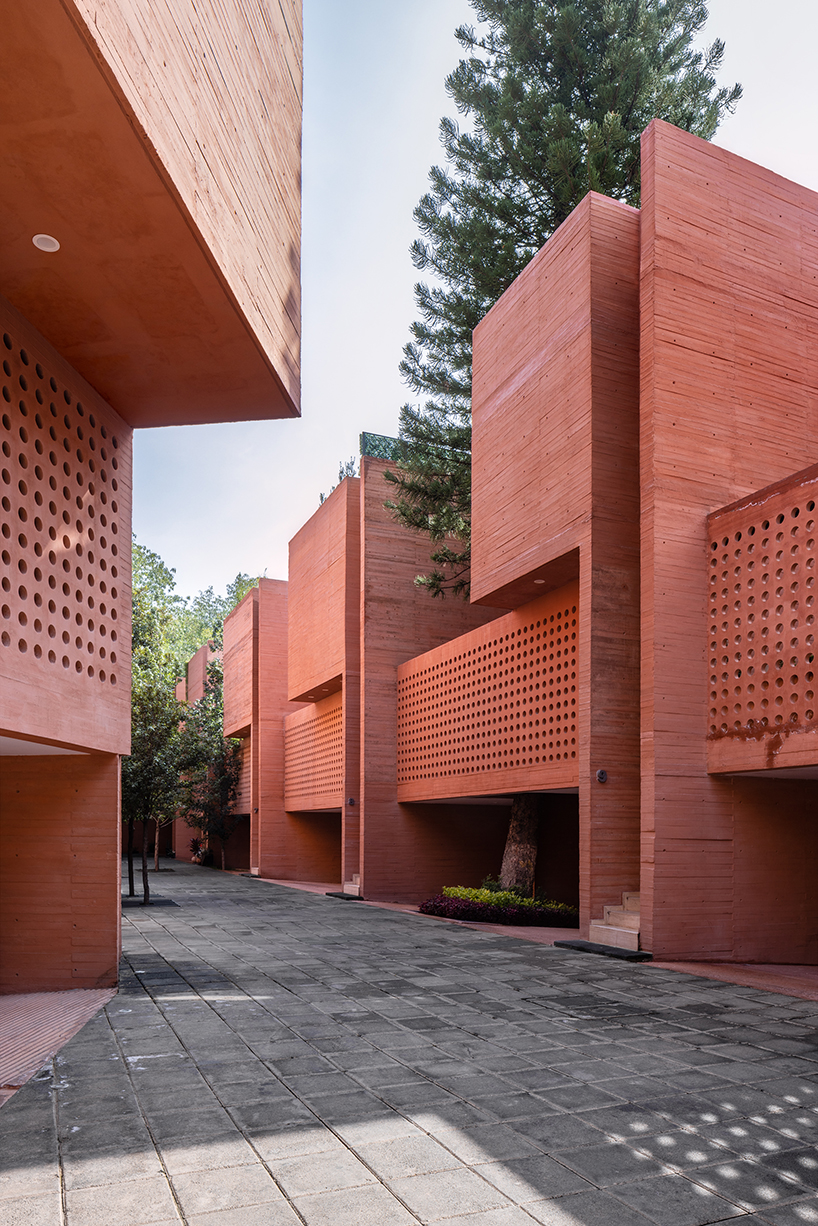
all images by Rafael Gamo
interconnected system conjoins open spaces into each module
The project proposes a multi-family home design adhering to a pedestrian scale considering the car as a complement, constructing a community under a system of individual living units in a neighborhood that allows new architecture under an analysis of contemporary urban life. Aiming to preserve the use of the land in the area the housing plan conserves and respects the heights allowed by the city regulations. Miguel de la Torre‘s objective of the project is to improve the quality of life without overloading the density use of the land. Generally atypical for the site, the proposal offers quality, convenience, and refined architectural forms serving as the new landmark of the region. The building is designed to be modular based on the complete construction and structure of orange-tinted concrete. Following a passive energy design strategy, the housing complex leverages natural lighting and cross ventilation conjoining all zones within each house and their corresponding open spaces, such as lighting cubes and patios, provided for each unit. The lighting design is simple but sufficient for the necessary level of comfort.
